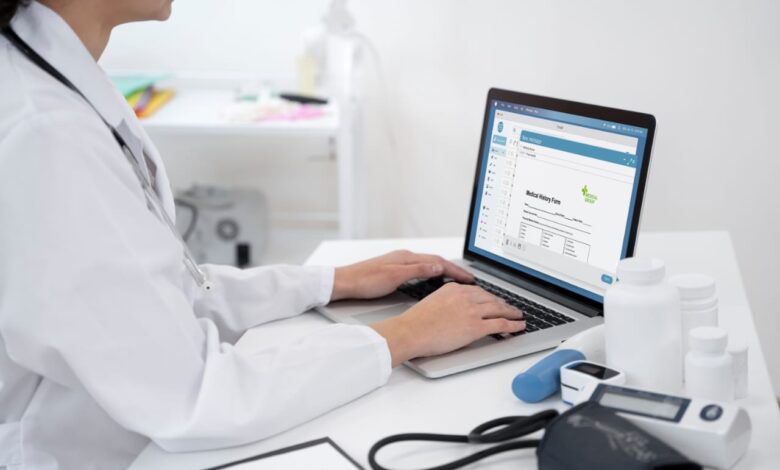How Remote Patient Monitoring is Redefining Patient Care?

With the trend of global virtual care, Remote Patient Monitoring (RPM) platforms have turned out to be a game changer in contemporary healthcare. These places are supposed to receive, transfer, and process patient data not in typical clinical facilities, usually at the home of a patient. As the number of patients with chronic conditions is increasing and the healthcare system is becoming overwhelmed, RPM platforms provide a cost-effective and scalable service that can benefit all groups of people: patients, providers, and payers.
What is a Remote Patient Monitoring Platform?
Essentially, an RPM platform is a software and hardware mix that enables providers to oversee the vital signs of patients, their symptoms, and their behavior remotely. It gathers data about health, including blood pressure, heart rate, glucose, oxygen saturation, and weight using medical connectivity devices. Such information is subsequently sent safely to potential healthcare providers who may access it asynchronously or in real-time, depending on clinical requirements.
Clinicians may use a dashboard as a part of the software layer of the platform that provides a place to view the data and also has mobile apps available to patients and data analytics that can flag abnormalities or recommend interventions. A lot of platforms are also integrated with electronic health records (EHRs) to provide them with an unspoiled working process.
The Growing Relevance in Modern Healthcare
It has led to the skyrocketing demand for RPM platforms, particularly since the COVID-19 pandemic, which promoted the growth of telehealth. But the value of RPM goes beyond crisis response. Such chronic illnesses as diabetes, high blood pressure, and COPD should be treated persistently, and conventional acute care may not be effective. RPM can be monitored daily, which will contribute to the early onset of complications and prevention of these problems.
In addition, hospitals and clinics are under pressure to minimize the situation of repeat admissions and enhance patient outcomes. RPM platforms facilitate such objectives by maintaining patient engagement in the care process and delivering needed data to clinicians to ensure informed action. Whether they are located in rural health clinics or even in urban hospitals, RPM is demonstrating how it is going to cover the access and quality gap.
Features That Make RPM Platforms Effective
Effective RPM platforms offer more than just data collection. They include real-time notification, the use of reminders, personalized care plans, and two-way communication. The patients are reminded of taking their readings and the providers are alerted when the readings exceed preset limits. There are even platforms available that will provide AI-enabled analytics that allow predicting patient deterioration before it occurs.
Patient engagement tools are also crucial. Patients are offered easy mobile applications, a multilingual interface, and educational materials to remain engaged in care. On the provider end, the platforms that enable the automation of a task or that auto-generate reports or sync data with EHRs can help a great deal in terms of administrative burden reduction.
Challenges in Implementation
Despite the advantages, RPM platforms come with challenges. Privacy of data and security concern ranks high, more so when it comes to sensitive health-related data that is usually sent across the internet. HIPAA requirements are obligatory and any violation may hurt the trust and reputation.
Another challenge is ensuring patient compliance. Not every patient is savvy and some of them may not take daily measurements or forget about them. Platforms should thus be laid with a user-friendly interface and efficient support systems.
There’s also the question of reimbursement. Although Medicare and most privately owned insurance plans have started reimbursing RPM services, the provision of distinct billing codes and the reimbursement rates are inconsistent. This burden makes it complicated to incorporate RPM to become the norm among the providers.
The Impact on Patient Outcomes and Healthcare Costs
Researchers have always proven that RPM may result in improved patient outcomes. It assists in preventing hospital stays and emergency room visits by identifying problems at an early stage. It also enhances the process of medication compliance and patient satisfaction, especially among individuals with chronic illnesses.
Economically, RPM assists in lowering healthcare expenditure. Long-term savings are attained through fewer hospital visits, fewer complications, and an increased ability to coordinate care. These outcomes directly affect reimbursement incentives to the providers involved in the value-based care models.
Conclusion
RPM platforms are no longer luxury or solutions of last resort; these solutions are becoming the norm in a modern healthcare environment. Although not all adoption and integration work are met, benefits in the form of higher outcomes, lower costs, and better patient engagement are too weighty to neglect. With the healthcare environment still in the process of transformation, RPM platforms will always take a more central stage in providing proactive, personalized, and time-efficient care.




